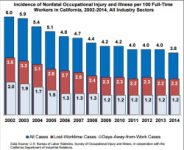VPP: Voluntary Protection Benefits Workers and Employers
At thousands of U.S. worksites, OSHA compliance is considered the bare minimum for safety excellence. These workplaces, members of OSHA’s Voluntary Protection Programs (VPP), have earned the right to call themselves overachievers when it comes to worker protection.










